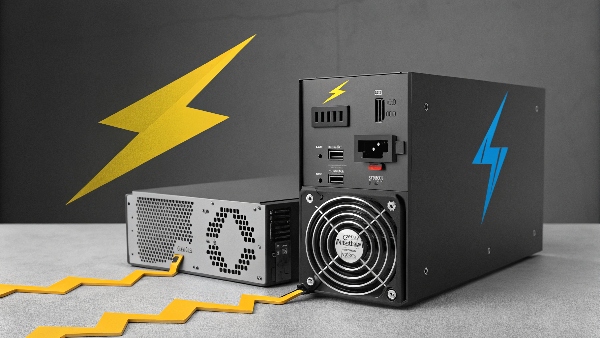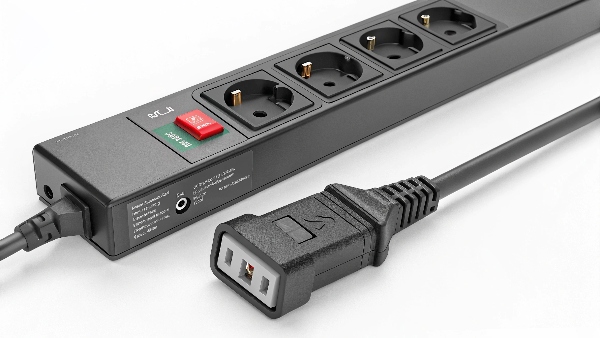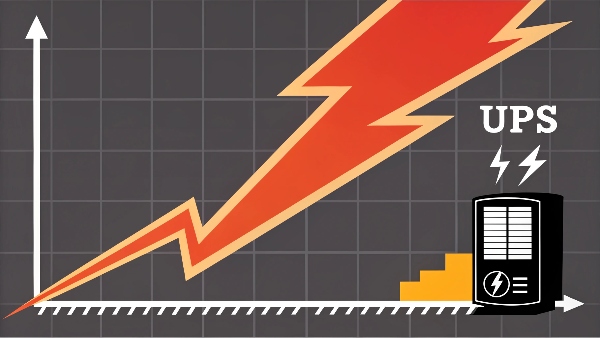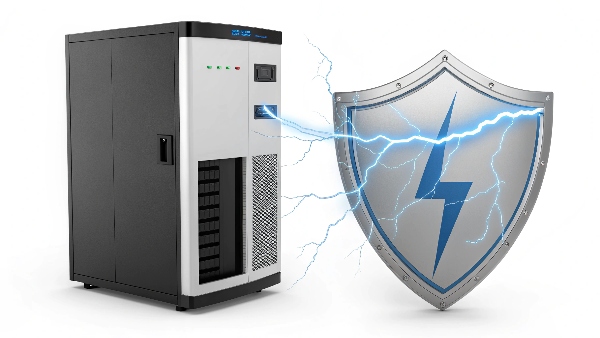Your computer suddenly dies, and you suspect a power surge, but you had a UPS! It's a frustrating and confusing situation. A quality UPS should be your power supply unit's (PSU) bodyguard against these electrical threats.
Yes, in rare instances, a very powerful surge can overwhelm a UPS's protective capabilities, or if the UPS is faulty or improperly chosen, it might not adequately stop the surge from damaging the connected PSU. However, a correctly sized and functional UPS is designed to prevent exactly this scenario.

This question about a PSU failing despite being connected to a UPS is something I've encountered a few times over my 10 years as an OEM/ODM manufacturer of uninterruptible power supplies. It's a valid concern because the primary purpose of a UPS, beyond providing battery backup, is to shield your sensitive electronics. While a UPS is a strong line of defense, it's not an infallible magic box. Understanding how surges, UPS systems, and PSUs interact is key. We provide solutions to global brands and critical infrastructure projects where such failures are unacceptable, so we've deeply analyzed these protection mechanisms. Let's explore how this can happen and what makes a good defense.
Does a UPS damage a PSU?
You bought a UPS to protect your gear, but now you're worried the UPS itself might be harmful to your PSU. This is an understandable fear, especially if you've heard stories.
No, a correctly functioning UPS, particularly one providing a clean sine wave output, should not damage a PSU. Problems are rare but can arise if the UPS has a very poor-quality simulated sine wave output that's incompatible with certain PSUs (especially those with Active PFC), or if the UPS unit itself is faulty and delivering unstable power.

A UPS is fundamentally designed to be a guardian for your Power Supply Unit (PSU) and other connected electronics, not a threat. In my experience, a well-designed and properly functioning UPS will protect, not harm, a PSU. The main concern sometimes voiced relates to the type of AC waveform the UPS outputs when it's running on battery power. Cheaper UPS models often produce a "simulated" or "approximated" sine wave. Most modern PSUs, which use switch-mode technology, can handle this fine. However, some high-end PSUs, especially those with Active Power Factor Correction (Active PFC), can be sensitive and may prefer a "pure sine wave" output, which mimics or is even cleaner than utility power. If there's a severe mismatch, it could theoretically stress the PSU over time, but outright damage is uncommon. We design both lead-acid and lithium battery UPS solutions, and many of our models offer pure sine wave output specifically to ensure compatibility with even the most sensitive equipment. A faulty UPS, of course, is a different story; if it's malfunctioning and outputting incorrect voltage or highly distorted power, then yes, it could potentially damage a PSU, just like bad utility power could. This is why quality control and certifications like CE and RoHS, which we adhere to, are so important.
| UPS Output Waveform | PSU Compatibility Concern | Our Approach |
|---|---|---|
| Simulated Sine Wave | Generally fine for most PSUs. Some Active PFC PSUs may prefer pure. | Suitable for cost-effective general protection. |
| Pure Sine Wave | Ideal for all PSUs, especially Active PFC and sensitive electronics. | Offered in many of our UPS lines for best compatibility. |
| Faulty UPS Output | Can damage any connected device. | Rigorous testing prevents this from our products. |
Can a power surge go through a UPS?
You rely on your UPS as a shield, but can a powerful electrical surge breach its defenses? Knowing the limits of its protection is crucial for safeguarding your valuable electronics effectively.
Yes, a power surge can sometimes pass through a UPS. This might happen if the surge is exceptionally large and exceeds the UPS's rated energy absorption capacity (joule rating), if the UPS's internal surge protection components (like MOVs) are old and worn out from previous surges, or if it's a very basic UPS model with minimal surge suppression features.

While a UPS is designed to stop surges, it's not an impenetrable wall. The primary components responsible for surge protection within most UPS systems are Metal Oxide Varistors (MOVs). These are clever devices that absorb and divert excess voltage. However, MOVs have two key limitations. First, they have a finite capacity to absorb energy, measured in Joules. An extremely powerful surge, like a nearby lightning strike, can deliver more energy than the MOVs are rated for. In such a case, the MOVs might be destroyed, and a portion of the surge could pass through to connected equipment. Second, MOVs are sacrificial components. Each time they suppress a surge, they degrade slightly. Over time, after many small surges or a few larger ones, their ability to protect diminishes. I've seen cases where an older UPS, which had silently protected against many minor surges over the years, finally failed to stop a more significant one because its MOVs were worn out. This is why some advanced UPS systems include indicators for faulty wiring or MOV status. Line-interactive and especially online double-conversion UPS systems (which we specialize in for critical applications) can offer superior surge protection because they more actively regulate or regenerate power, providing an additional buffer.
Can a power surge damage a PSU?
A sudden storm, a flicker of lights, and then your computer refuses to turn on. Could a power surge have silently assassinated your PSU, even if other devices seem fine?
Absolutely. A power surge is a very common culprit for damaging or destroying a Power Supply Unit (PSU). The sudden spike of high voltage can overwhelm and fry the sensitive internal components of the PSU, rendering it useless and potentially harming other connected computer parts.

Yes, unequivocally, a power surge can absolutely wreck a PSU. The PSU is the gateway for power into your computer or electronic device. It takes the AC power from your wall outlet and converts it into the various DC voltages your components need. When a surge—a transient spike in voltage—hits, it can blast through the PSU's input stage. Sensitive components inside the PSU, such as capacitors, transistors, diodes, and integrated circuits, are designed to operate within specific voltage tolerances. A surge far exceeds these, causing them to overheat, short out, or literally explode. I recall a client who ran a small design studio; a local power event sent a surge through their building, and every unprotected computer had a fried PSU. Some even had motherboard damage because the failing PSU passed on damaging voltages. While modern PSUs have some level of built-in surge protection, it's often minimal and not designed to handle significant spikes. This is precisely why an external UPS with robust surge suppression is so vital – it acts as the first and much stronger line of defense for the PSU.
The damage isn't always spectacular. Sometimes a surge can weaken components, leading to intermittent problems or a PSU that fails weeks or months later. This makes diagnosing the root cause tricky unless you understand the history of power events.
Does a UPS protect against surges?
You're considering a UPS, mainly for its battery backup, but does it also guard against those nasty power surges? Understanding this dual role is key to appreciating its full value.
Yes, a core function of virtually all Uninterruptible Power Supplies (UPS) is to provide protection against power surges. They incorporate surge suppression circuitry, typically using Metal Oxide Varistors (MOVs), to absorb and divert excess voltage away from your connected sensitive equipment.

Indeed, surge protection is a fundamental feature of almost every UPS on the market, from basic standby models to sophisticated online systems like those we develop with patented technology. The main workhorse for this job, as mentioned, is the Metal Oxide Varistor (MOV). When the voltage rises above a certain threshold, the MOV's resistance drops dramatically, allowing it to conduct the excess current and divert it safely to the ground line, clamping the voltage to a safer level for your connected equipment. The effectiveness of surge protection is often indicated by a "Joule rating" – the higher the joules, the more energy the UPS can absorb before its protection is compromised. Many UPS units also include protection for data lines (Ethernet RJ45, phone RJ11, or coaxial) because surges can travel through these paths too.
It's important to note the different UPS topologies offer varying levels of overall power quality:
- Standby UPS: Provides basic surge protection and switches to battery during an outage.
- Line-Interactive UPS: This type, very common for home and office, includes an Automatic Voltage Regulation (AVR) transformer. AVR actively corrects minor sags and swells without using the battery, which reduces stress on connected PSUs and also means the MOVs might face fewer smaller surges, potentially extending their life.
- Online (Double-Conversion) UPS: This offers the highest level of protection. It constantly regenerates clean power, completely isolating the connected equipment from raw utility power and its anomalies, including surges. This is the standard for critical systems we supply to data centers, hospitals, and banks.
So, when you buy a UPS, you are indeed getting a vital surge protector as part of the package.
Conclusion
A UPS is a crucial defense for your PSU against power surges. While extremely rare events or failing units might compromise this, a properly selected, high-quality UPS significantly minimizes the risk, safeguarding your valuable electronics.

